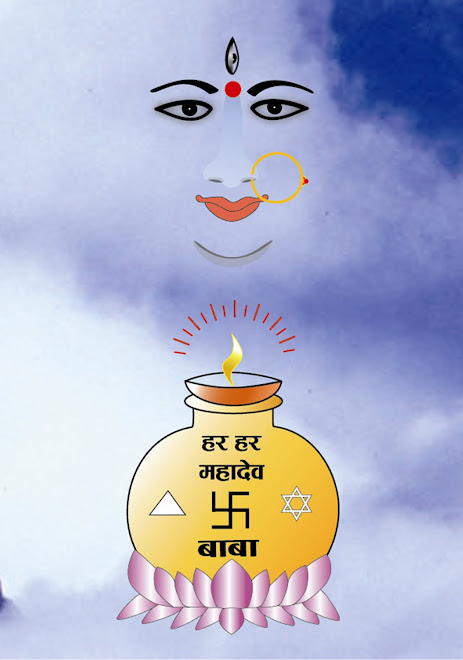
AGHORA: A BRIEF HISTORY
It is not always easy to sort out the various traditions that constitute the Hindu pantheon; nonetheless, a look at the cosmological structure of divinities in Hindu theology helps to place a particular tradition in its larger philosophical and historical context. In the Hindu under standing there exits the formless Brahma or Brahman a single entity from which the creation emanated, and into which it all dissolves ultimately. The desire of Brahman to create the world brought forth its creative energy, conceptualized as a feminine energy, which led to the emergence of the Hindu trinity Brahma, the creator; Vishnu, the preserver; and Shiva, the one who destroys so that the world can be created afresh. These three are the primary gods of whom only two are worshipped by most Hindus, but it is also understood that their powers are animated by the feminine creative principle, the goddess, who is worshipped either on her own or as a consort of each one of these gods in her various forms and with various attributes.
The two gods of the trinity most worshipped by Hindus are Vishnu, and Shiva. The worshippers of Vishnu are vaishnavas, and the worshippers of Shiva are shaiva. The worshippers of the Goddess are Shakta, although elements of Shaktism can be found in both Vaishnava as well as shaiva traditions; the degree of its prevalence depends upon the proclivities of the particulates sub tradition of these two primary streams. Brahma’s worship is not so widely prevalent; in fact, there exists only major active temple to Brahma in all of India, at pushkar in the state of Rajasthan. Historically, the worship of Vishnu is a result of the primacy attained by the brahmanical Vedic religion after the Aryan advent into India, while shaiva Shakta traditions are generally regarded as being prearyan, indigenous to the land, representing traditions which have greatly influenced other streams of worship within Hinduism, and which have themselves become modified with the passage of the centuries. Yet, one of the primary gods described in the Vedas is Rudra, considered by many to be a prearyan deity, also regarded as an earlier conception of the God shiva of the Hindu Trinity.
It is not always easy to sort out the various traditions that constitute the Hindu pantheon; nonetheless, a look at the cosmological structure of divinities in Hindu theology helps to place a particular tradition in its larger philosophical and historical context. In the Hindu under standing there exits the formless Brahma or Brahman a single entity from which the creation emanated, and into which it all dissolves ultimately. The desire of Brahman to create the world brought forth its creative energy, conceptualized as a feminine energy, which led to the emergence of the Hindu trinity Brahma, the creator; Vishnu, the preserver; and Shiva, the one who destroys so that the world can be created afresh. These three are the primary gods of whom only two are worshipped by most Hindus, but it is also understood that their powers are animated by the feminine creative principle, the goddess, who is worshipped either on her own or as a consort of each one of these gods in her various forms and with various attributes.
The two gods of the trinity most worshipped by Hindus are Vishnu, and Shiva. The worshippers of Vishnu are vaishnavas, and the worshippers of Shiva are shaiva. The worshippers of the Goddess are Shakta, although elements of Shaktism can be found in both Vaishnava as well as shaiva traditions; the degree of its prevalence depends upon the proclivities of the particulates sub tradition of these two primary streams. Brahma’s worship is not so widely prevalent; in fact, there exists only major active temple to Brahma in all of India, at pushkar in the state of Rajasthan. Historically, the worship of Vishnu is a result of the primacy attained by the brahmanical Vedic religion after the Aryan advent into India, while shaiva Shakta traditions are generally regarded as being prearyan, indigenous to the land, representing traditions which have greatly influenced other streams of worship within Hinduism, and which have themselves become modified with the passage of the centuries. Yet, one of the primary gods described in the Vedas is Rudra, considered by many to be a prearyan deity, also regarded as an earlier conception of the God shiva of the Hindu Trinity.
+copy.jpg)



.jpg)











+of+Scan10154.jpg)